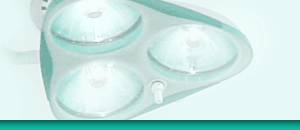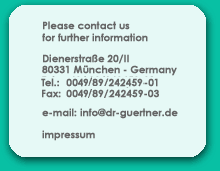Quality for hygiene also means that
we use only one-way material for surgery. This is not yet
standard, although European standards recommend using only
one way material ( EN 13975-1. ). We take care and do everything
to prevent possible contamination by bacteria, or hepatitis
B or HIV.
It is known that major contamination
of MRSA is from the patient himself/herself. For patients
with history of long hospital stays we recommend culture (bacteriology)
of nose and throat prior two weeks of scheduled surgery.
Lamina-air flow conditions mean nearly
clean air is in the operating room. Doors close and open by
automatic sensor, so ” dirty air” should not come
in. The patient takes care of his/hers personal hygiene by:
showering in the morning and removing hair in the surgery
fields as instructed, cutting finger-nails. Personal clothing
is taken off in the changing room also to prevent contamination.
Of course we do disinfect before surgery and have the concept
of antibiotic prophylaxis.
For all these procedures we still
cannot neglect the risk of infection, which is overall (hospital
and outpatient treatment) about 1-3%. But we guarantee that
with all measurement possible to us we provide highest standards
of hygiene.
|




